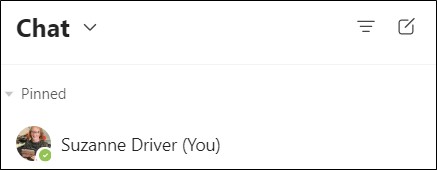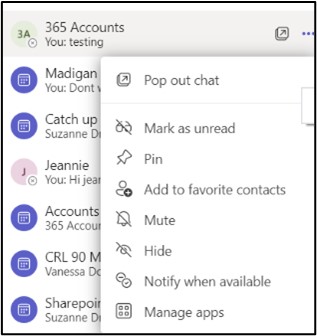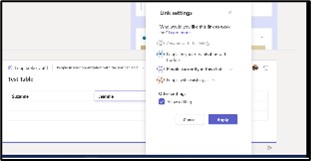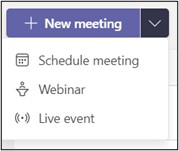 | Microsoft Teams - a Quick GuideGuest blog from Suzanne Driver from 365 Training Consultants |
What is Teams?
Teams is online or desktop application with the majority of users using “Chat” and “Meetings” which is what we will focus on in this blog.
Teams can be installed on mobile phones and other devices, but this blog is concentrating on using Teams on your computer.
Chat – New and Viewing
Chat has replaced any previous systems we used for Instant Messaging. We send a chat to our colleagues and receive a reply.
How to create a new CHAT
To create a new chat use the icon above your name in the Chat (incidentally you can send chat to yourself to remind yourself of something, make notes or send files.) Note – you can chat with colleagues in your organisation and (dependant on organisational settings) chat with guest users who are external users.

Alternatively, if you type /chat and enter, in the bar to the right it will ask you who you want to chat with, and also enable you to type a message and send. This is great for quick messages.

The list down the left side in chat displays information about the type of chat, for example,

Chat relating to a Meeting - Calendar icon

Chat relating to one person note the date and external to the right
Against a person you will also see their status indicator which displays if they are available, busy, offline or away.
Note: on the right click against a chat you can “Pop Out” which makes it easier to chat with someone during the day

Options on right click also include
- Pin which keeps the chat at the top of the list
- Hide as you cannot delete. It will unhide once a conversation is resumed
- Mute will stop notifications but you will still be able to view chats
- Notify when available – notify when someone status is available
Chat Options

When typing a message, you can include any of the options below the chat. (Note organisations can disable some of these). They include:

Formatting your text

Attaching a file (or files)

Including a component which enables users in the chat to edit in the chat directly as a table, bullets etc

Meetings
Meetings are set up in either Outlook or directly in the Calendar in Teams.
My suggestion is use Outlook to set up the meeting and manage the adding and deleting of attendees.
If you are inviting external users, you may want to check the meeting options to decide if they can be let directly into the meeting or if they have to wait in the lobby. When creating the meeting ensure that you use the Teams Meeting option which generates a meeting code for those attending.
Create the event directly in Teams if you are setting up the meeting as a Webinar or Live Event. (Note this will depend on your licence).

During a Meeting
(Microsoft Teams Bar)
Microsoft has added in many options to your meetings, some of them are below
- Together Mode – when having a meeting with a few people, choose together mode – it removes everyone background and puts you all in a scene such as a conference room or even under the sea!
- Sharing Screen – You can share your screen or a window with others. If you are delivering a PowerPoint presentation scroll down to use the PowerPoint Live mode rather than trying to share a PowerPoint screen. A new option has recently been added that you can “Pop Out” a shared screen making it easier to view and move to a different screen.
- Live Captions – in a meeting you can turn on Live Captions so that the text from the speaker is displayed on screen. (Improves diction as well!)
- The meeting features of Meeting Notes, Meeting Attendance and Recording Meetings are all popular but have you tried the Shared Whiteboard?
For more information on these options, or training on and using Teams, email suzanne@365trainandconsult.onmicrosoft.com and quote ILFM

Comments